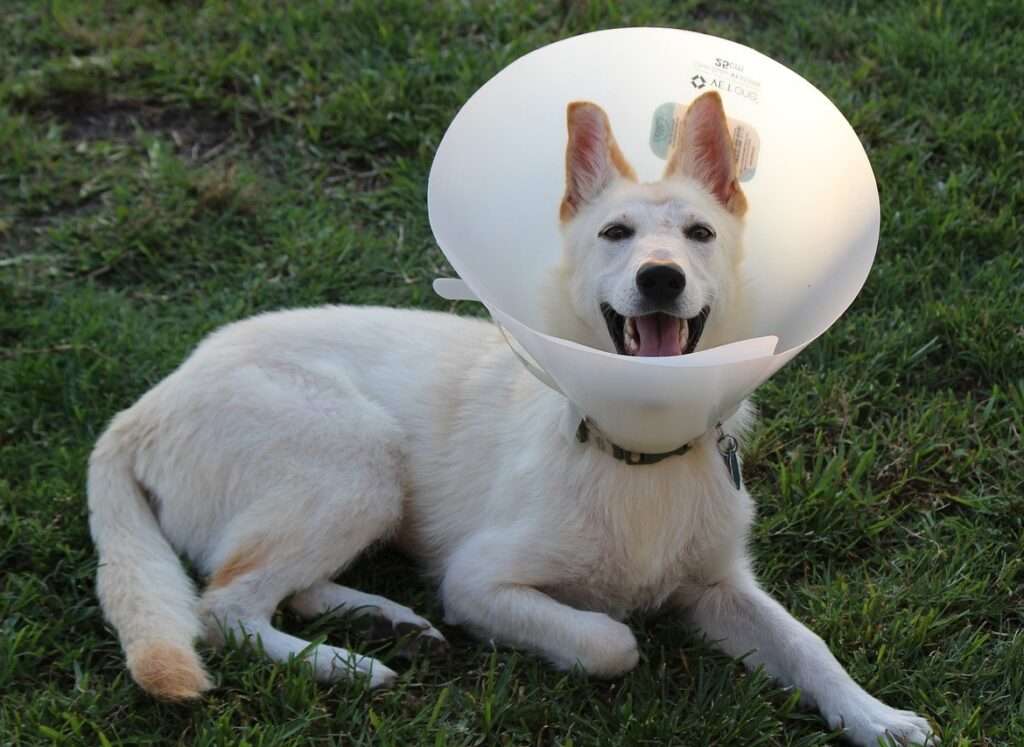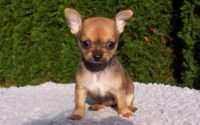How Soon Can I Walk My Dog After Neutering? A Step-by-Step Guide
After a dog is neutered, pet owners often have several concerns regarding their furry friend’s recovery. Understanding these concerns is essential for ensuring the well-being of your beloved pet. From post-operative healing to exercise limitations, we’ll address all your questions and equip you with the knowledge to provide the best care possible.
In this comprehensive guide, we address a frequently asked question: How soon can you walk your dog after neutering? We’ll delve into the factors that influence this timeline and provide valuable insights to help you make informed decisions regarding your dog’s post-neutering care. By following our guidelines, you can help your dog transition smoothly into a regular walking routine post-neutering.
Understanding Neutering and Its Effects
Neutering, also known as castration or spaying, involves the surgical removal of the reproductive organs in dogs. For male dogs, the testicles are removed, while for females, the ovaries and uterus are typically removed. This routine surgical procedure is performed by licensed veterinarians and is a safe and effective way to prevent unwanted pregnancies and improve your dog’s health.
Neutering offers numerous benefits to your dog’s well-being. Firstly, it helps control the dog population by preventing unplanned litters. Additionally, neutering can reduce the risk of certain reproductive cancers and alleviate behavioral issues related to mating instincts. By neutering your dog, you’re promoting their long-term health and ensuring a happier, more balanced companion.
Unfortunately, there are several misconceptions surrounding neutering that may cause concern or confusion. It’s important to address these myths and provide accurate information. Some common misconceptions include the belief that neutering leads to obesity or alters a dog’s personality. We’ll debunk these myths and shed light on the real effects of neutering on dogs.
The Healing Process after Neutering
Following your dog’s neutering procedure, your veterinarian will provide you with specific post-operative care instructions. These instructions may include guidelines for managing pain, administering medication, and monitoring the incision site. It’s crucial to follow these instructions diligently to ensure your dog’s optimal healing and minimize the risk of complications.
As part of the healing process, it’s important to keep a close eye on your dog’s incision site. Look out for any signs of infection, such as redness, swelling, discharge, or an unpleasant odor. Additionally, monitor for any excessive licking, chewing, or scratching around the incision area. Should you notice any concerning symptoms, promptly consult your veterinarian for further evaluation and guidance.
The healing process after neutering typically occurs in several stages. Understanding these stages can help you gauge when it’s appropriate to start walking your dog again. The stages include:
- Immediate post-surgery recovery period: This stage usually lasts for a few days, during which your dog will need ample rest and restricted movement to allow for initial healing.
- Short-term healing and incision site care: Over the next 1-2 weeks, the incision site will gradually heal, and your dog’s sutures may be removed or dissolve naturally.
- Long-term healing and tissue recovery: Beyond the initial recovery period, your dog’s body will continue to heal internally. This phase can last for several weeks, during which you should remain vigilant and adjust activities accordingly.
Factors to Consider before Walking Your Neutered Dog
It’s important to remember that each dog is unique, and healing times can vary. Factors such as age, overall health, and individual response to surgery can influence the recovery timeline. While general guidelines can be helpful, always consult with your veterinarian to determine the best time to resume walking based on your dog’s specific circumstances.
- Consultation with your veterinarian: Your veterinarian is your best resource when it comes to assessing your dog’s readiness for walking post-neutering. They have the expertise and knowledge of your dog’s medical history, making them well-equipped to provide personalized advice. Reach out to your veterinarian for a follow-up appointment or schedule a phone consultation to discuss your dog’s progress and determine when it’s safe to resume walking.
- Evaluating your dog’s comfort level and behavior: Observing your dog’s behavior and comfort level is crucial in determining when to start walking them after neutering. If your dog appears energetic, has a healthy appetite, and shows no signs of pain or discomfort, it may be an indication that they are ready for light exercise. However, if your dog seems lethargic, exhibits pain-related behaviors, or shows reluctance to move, it’s best to postpone walking until they demonstrate improved comfort and vitality.
- Potential risks of early or strenuous exercise: Engaging in strenuous exercise too soon after neutering can potentially lead to complications and hinder the healing process. It’s important to prioritize your dog’s well-being and follow the recommended guidelines for post-operative care. Pushing your dog to walk before they are ready can increase the risk of reopening the incision site, causing pain, or delaying healing. Remember, patience and caution are key when it comes to post-neutering exercise.
General Guidelines for Walking Your Neutered Dog

During the recovery period after neutering, it’s essential to keep your dog on a leash when going for walks. Leash walking provides control and prevents your dog from engaging in excessive physical activity or rough play, which could potentially disrupt the healing process. Opt for a sturdy leash and ensure your dog is comfortable with the walking equipment before venturing out.
As your dog progresses through the healing stages, you can gradually reintroduce physical activity. Start with short, gentle walks and observe how your dog responds. Monitor for any signs of discomfort, fatigue, or irritation around the incision site. Slowly increase the duration and intensity of the walks over time, while always being attentive to your dog’s well-being.
Every dog’s recovery process is unique, and their ability to handle exercise may vary. Pay attention to your dog’s cues and adjust the intensity and duration of walks accordingly. If your dog shows signs of fatigue, pain, or reluctance to continue, it’s crucial to decrease the exercise level and give them additional rest. Always prioritize your dog’s comfort and never push them beyond their limits.
During the healing process, it’s important to avoid high-impact activities, such as running, jumping, or rough play. These activities can put strain on your dog’s healing body and potentially lead to complications or injury. Stick to calm, controlled walks and engage in low-impact exercises that promote mental stimulation instead.
Determining the Optimal Time to Walk Your Dog
To determine the optimal time to resume walking your dog after neutering, consult with your veterinarian. They can provide valuable insights based on your dog’s specific condition and progress. Your veterinarian will consider factors such as the type of neutering procedure, the healing process, and any potential complications that may affect the walking timeline. Open communication with your veterinarian ensures the best outcome for your dog’s recovery.
The type of neutering procedure your dog underwent can influence the healing process and the recommended time to start walking. For example, a minimally invasive procedure may result in a shorter recovery period compared to traditional surgery. Discuss the specifics of your dog’s procedure with your veterinarian to get a better understanding of the expected recovery timeline.
Regularly monitor your dog’s post-operative progress and the healing of the incision site. Observe for any signs of inflammation, redness, or discharge that may indicate complications. The incision should gradually heal, and any sutures may be removed or dissolve naturally. By assessing the healing progress, you can gauge when it’s safe to introduce walking into your dog’s routine.
Age, breed, and overall health play significant roles in the recovery process after neutering. Younger dogs may generally recover faster than older dogs, while certain breeds may have different healing tendencies. Additionally, pre-existing health conditions can impact the timeline for walking after neutering. Take these factors into consideration and consult with your veterinarian for a more accurate estimation of when your specific dog can resume walking.
Potential Complications and Warning Signs

While the majority of dogs recover smoothly after neutering, there is a possibility of complications. It’s crucial to be vigilant and watch for signs of infection or other issues related to the incision site. Keep an eye out for redness, swelling, increased warmth, discharge, or an unpleasant odor. These may indicate an infection or other complications, and you should promptly consult your veterinarian for further evaluation and guidance.
Neutering can cause temporary changes in your dog’s behavior. Some dogs may experience increased restlessness, decreased appetite, or changes in energy levels. It’s important to monitor these behavioral changes and consult with your veterinarian if they persist or worsen over time. Your veterinarian can provide guidance on managing any post-neutering behavioral adjustments.
If you have any concerns or notice any unusual symptoms during your dog’s post-neutering recovery, do not hesitate to reach out to your veterinarian. They are the best resource for addressing your concerns and providing appropriate advice. Early intervention can help prevent complications and ensure your dog’s well-being.
Tips for a Successful Post-Neutering Walking Routine
Before embarking on a walk, engage your dog in mental stimulation activities to help them focus and expend mental energy. This can include puzzle toys, obedience training sessions, or scent games. Mental stimulation helps prepare your dog for a focused and enjoyable walk, reducing the likelihood of overexcitement or excessive physical exertion.
Use walking sessions as an opportunity to reinforce obedience training with your dog. Practice commands such as “sit,” “stay,” or “heel” during the walk. This not only helps maintain control but also provides mental stimulation and strengthens the bond between you and your furry companion.
While your dog is recovering from neutering, it’s important to balance exercise with socialization opportunities. Controlled, supervised interactions with other dogs or people during walks can help keep your dog’s social skills intact. Ensure that the interactions are positive and monitor your dog’s behavior closely to prevent any rough play or overexertion.
Ensure you have the right walking equipment for your dog, such as a well-fitted harness or collar and a sturdy leash. Choose a leash length that allows your dog some freedom to explore while maintaining control. Practice proper leash handling techniques to promote safe and enjoyable walks for both you and your dog.
By following these tips and staying attentive to your dog’s needs, you can establish a successful post-neutering walking routine. Remember to consult your veterinarian for personalized advice and guidance throughout the process.
Other Post-Neutering Considerations
After neutering, it’s important to evaluate your dog’s dietary needs. Neutering can slightly decrease a dog’s metabolism, so adjusting their food intake to prevent weight gain is essential. Consult with your veterinarian to determine the appropriate portion sizes and consider transitioning to a high-quality, balanced diet that meets your dog’s specific nutritional requirements during the recovery period.
Neutering can temporarily affect a dog’s hormone levels, which may influence their mood and behavior. Keep a close eye on your dog’s mental well-being and provide them with plenty of mental stimulation, social interaction, and affection. Engage in activities that your dog enjoys, such as puzzle toys, interactive play, or training sessions, to promote mental and emotional wellness.
Some dogs may exhibit behavioral changes after neutering. This can include increased or decreased energy levels, alterations in marking behavior, or adjustments in social dynamics. Patiently address any behavioral changes and consult with a professional dog trainer or behaviorist if needed. They can provide guidance on managing and modifying any undesirable behaviors that may arise.
Conclusion
Neutering your dog is an important step in responsible pet ownership, promoting population control, and ensuring their long-term health and well-being. While the question of when to walk your dog after neutering is a common concern, it’s crucial to prioritize their recovery and follow the guidance of your veterinarian.
By understanding the healing process, monitoring for potential complications, and gradually reintroducing physical activity, you can establish a successful post-neutering walking routine for your beloved companion. Remember to consider individual factors, consult with your veterinarian, and prioritize your dog’s comfort and safety throughout the recovery period.
At BarkLikeMeow, we are dedicated to providing comprehensive guidance to pet owners, ensuring that you have the knowledge and resources needed to provide the best care for your furry friend. By following the guidelines outlined in this article, you can navigate the post-neutering period with confidence, knowing that you are promoting your dog’s health and happiness.
Frequently Asked Questions
Q: How soon can I walk my dog after neutering?
A: In general, it is recommended to wait at least 10 to 14 days before walking your dog after neutering. However, it’s important to note that the exact timing can vary depending on various factors such as the type of surgery, your dog’s individual healing process, and any specific instructions provided by your veterinarian.
Q: Can I walk my dog immediately after neutering?
A: No, it is generally recommended to avoid walking your dog immediately after neutering. The immediate post-operative period requires rest and recovery. Follow your veterinarian’s instructions on when it is safe to start walking your dog again.
Q: What are the potential complications after neutering?
A: While complications are rare, they can include infection, swelling, or discomfort around the incision site. Watch for signs of redness, discharge, or excessive licking. If you notice any concerns, contact your veterinarian for further evaluation.
Q: Can I let my neutered dog off-leash during walks?
A: It’s important to keep your dog on a leash during the recovery period after neutering. This helps prevent excessive physical activity or rough play that could disrupt the healing process. Always prioritize your dog’s safety and follow leash laws and regulations.
Q: How do I gradually increase my dog’s exercise after neutering?
A: Start with short, gentle walks and observe how your dog responds. If they show signs of fatigue or discomfort, decrease the intensity or duration of the walks. Gradually increase the exercise level based on your dog’s comfort and well-being.
Q: Will neutering affect my dog’s behavior?
A: Neutering can cause temporary changes in behavior, such as decreased aggression or marking behaviors. However, each dog is unique, and the impact of neutering on behavior can vary. Consult with a professional dog trainer or behaviorist if you have concerns about your dog’s behavior post-neutering.
Q: Should I make any dietary adjustments after my dog is neutered?
A: Neutering can slightly decrease a dog’s metabolism, so it’s important to adjust their food intake to prevent weight gain. Consult with your veterinarian to determine the appropriate portion sizes and nutritional needs for your dog during the recovery period.
Q: What if my dog shows signs of pain or discomfort after walking?
A: If your dog shows signs of pain or discomfort after walking, it’s important to consult with your veterinarian. They can evaluate your dog’s condition and provide appropriate advice or treatment options.
Q: Can I engage in other activities with my dog during the recovery period after neutering?
A: While it’s important to limit strenuous activities, you can provide mental stimulation and gentle play. Interactive toys, light training, and supervised low-impact play are suitable alternatives. Follow your vet’s recommendations for post-neutering activities.
Always consult with your veterinarian for personalized advice and guidance regarding your dog’s specific needs and recovery after neutering.




